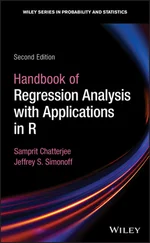Romeo Ortega - PID Passivity-Based Control of Nonlinear Systems with Applications
Здесь есть возможность читать онлайн «Romeo Ortega - PID Passivity-Based Control of Nonlinear Systems with Applications» — ознакомительный отрывок электронной книги совершенно бесплатно, а после прочтения отрывка купить полную версию. В некоторых случаях можно слушать аудио, скачать через торрент в формате fb2 и присутствует краткое содержание. Жанр: unrecognised, на английском языке. Описание произведения, (предисловие) а так же отзывы посетителей доступны на портале библиотеки ЛибКат.
- Название:PID Passivity-Based Control of Nonlinear Systems with Applications
- Автор:
- Жанр:
- Год:неизвестен
- ISBN:нет данных
- Рейтинг книги:5 / 5. Голосов: 1
-
Избранное:Добавить в избранное
- Отзывы:
-
Ваша оценка:
PID Passivity-Based Control of Nonlinear Systems with Applications: краткое содержание, описание и аннотация
Предлагаем к чтению аннотацию, описание, краткое содержание или предисловие (зависит от того, что написал сам автор книги «PID Passivity-Based Control of Nonlinear Systems with Applications»). Если вы не нашли необходимую информацию о книге — напишите в комментариях, мы постараемся отыскать её.
, expert researchers and authors Drs. Romeo Ortega, Jose Guadalupe Romero, Pablo Borja, and Alejandro Donaire deliver a comprehensive and detailed discussion of the most crucial and relevant concepts in the analysis and design of proportional-integral-derivative controllers using passivity techniques. The accomplished authors present a formal treatment of the recent research in the area and offer readers practical applications of the developed methods to physical systems, including electrical, mechanical, electromechanical, power electronics, and process control.
The book offers the material with minimal mathematical background, making it relevant to a wide audience. Familiarity with the theoretical tools reported in the control systems literature is not necessary to understand the concepts contained within. You’ll learn about a wide range of concepts, including disturbance rejection via PID control, PID control of mechanical systems, and Lyapunov stability of PID controllers.
Readers will also benefit from the inclusion of:
A thorough introduction to a class of physical systems described in the port-Hamiltonian form and a presentation of the systematic procedures to design PID-PBC for them An exploration of the applications to electrical, electromechanical, and process control systems of Lyapunov stability of PID controllers Practical discussions of the regulation and tracking of bilinear systems via PID control and their application to power electronics and thermal process control A concise treatment of the characterization of passive outputs, incremental models, and Port Hamiltonian and Euler-Lagrange systems Perfect for senior undergraduate and graduate students studying control systems,
will also earn a place in the libraries of engineers who practice in this area and seek a one-stop and fully updated reference on the subject.



 , the output
, the output  . Under some additional assumptions, it also follows that
. Under some additional assumptions, it also follows that  . For instance, the latter property holds true, with
. For instance, the latter property holds true, with  , under the very weak assumption that there exists a steady‐state with
, under the very weak assumption that there exists a steady‐state with  and
and  constants. Invoking Theorem A.2 it follows that convergence of the output to zero is also achieved if
constants. Invoking Theorem A.2 it follows that convergence of the output to zero is also achieved if  is passive with a positive definite (with respect to the origin) storage function and the output
is passive with a positive definite (with respect to the origin) storage function and the output  is zero‐state detectable. Also, we note that the use of passivity in the design can potentially produce, in some cases, slow responses that cannot be improved due to limited tuning parameters, see, for instance, Section 4.5.
is zero‐state detectable. Also, we note that the use of passivity in the design can potentially produce, in some cases, slow responses that cannot be improved due to limited tuning parameters, see, for instance, Section 4.5. . Clearly, this term can be added only when the output
. Clearly, this term can be added only when the output  has relative degree one, that is, when
has relative degree one, that is, when  . 2 But even for systems without a derivative action, a singularity may appear for systems with relative degree zero, that is with
. 2 But even for systems without a derivative action, a singularity may appear for systems with relative degree zero, that is with  .
. for the closed‐loop system. As will become clear below, the assumptions are technical only, and rather weak, but they are given for the sake of completeness.
for the closed‐loop system. As will become clear below, the assumptions are technical only, and rather weak, but they are given for the sake of completeness.

 is computable , it is shown that the closed‐loop system can be represented as a pH system with algebraic constraints . However, leaving aside the complexity of computing
is computable , it is shown that the closed‐loop system can be represented as a pH system with algebraic constraints . However, leaving aside the complexity of computing  , the stability analysis of this kind of systems remains an essentially open question.
, the stability analysis of this kind of systems remains an essentially open question. , let us compute its derivative
, let us compute its derivative










